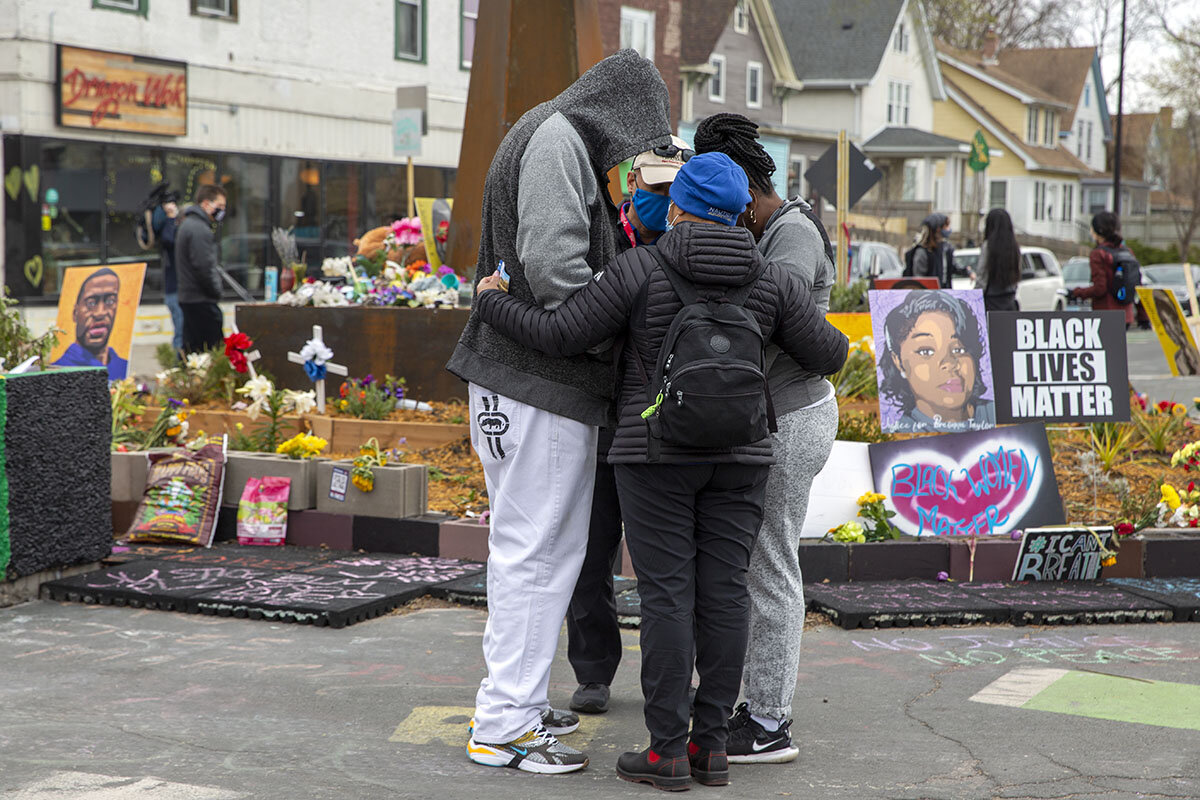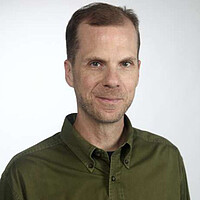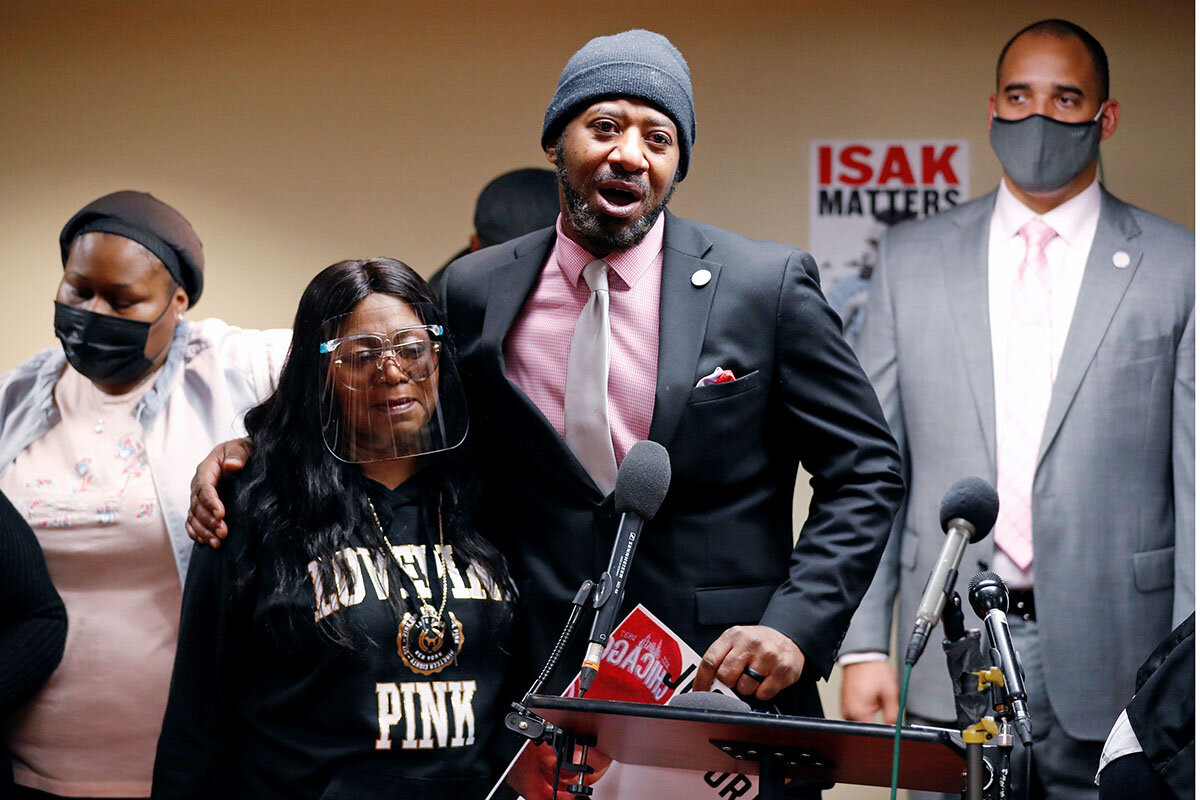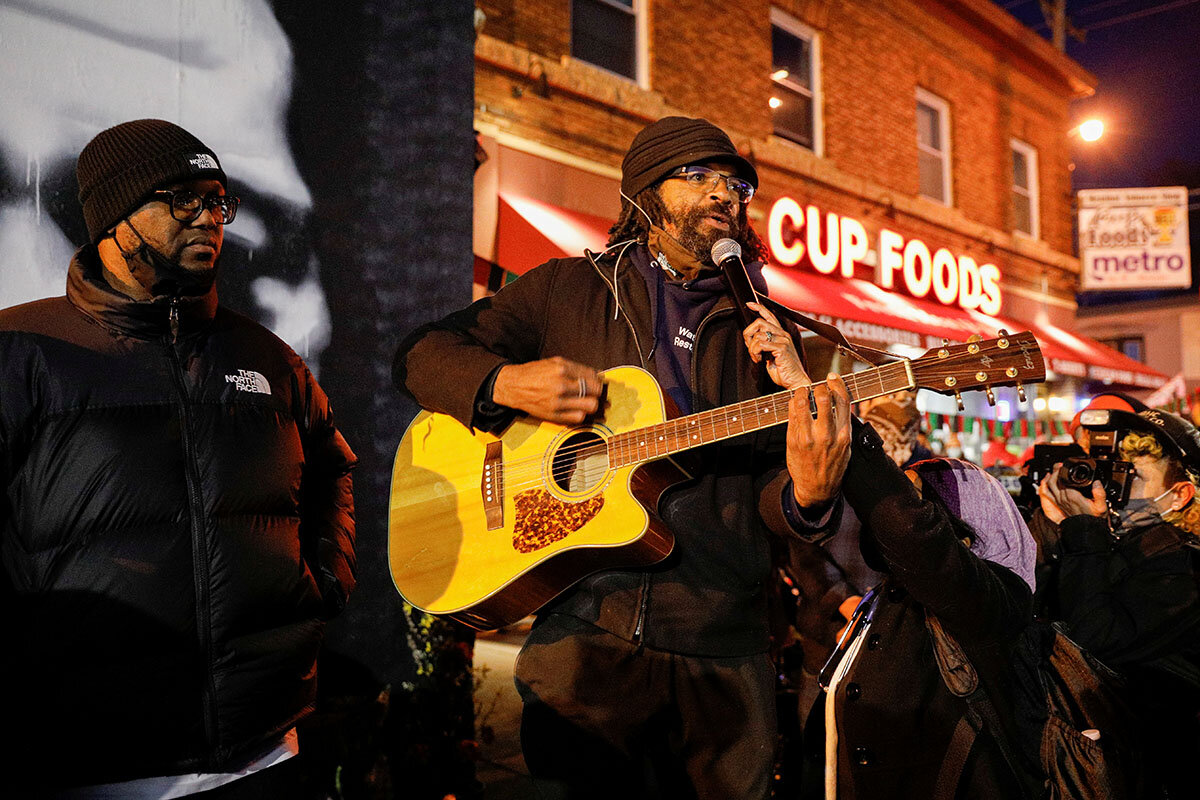A Minneapolis native on the city’s history, verdict, and future
Loading...
| Minneapolis
I traveled here for the start of Derek Chauvin’s trial last month and found that my hometown resembled an occupied state. Concrete barricades, armored military vehicles, and uniformed troops ringed the downtown courthouse, where jurors would hear the case against the former police officer accused of killing George Floyd. A pair of signs hanging side by side on a security fence offered mixed messages – “You Are Welcome Here” and “Restricted Area Do Not Enter” – befitting a city at war with itself.
Shadows cast by high-rises in the late-afternoon light slanted across almost barren sidewalks and streets. The stillness called to mind the uneasy quiet that greeted U.S. soldiers entering villages in Afghanistan when I reported from there a decade ago. Wooden boards covered first-floor windows of buildings near the courthouse, and reading the graffiti scrawled across the panels, I heard the silent chants of an invisible crowd: “Black Lives Matter,” “Hold Police Accountable,” “No Justice, No Peace.”
I began to feel a low-grade dread. The city had erupted last May over a video that showed Mr. Chauvin kneeling on Mr. Floyd’s neck until the life drained out of him. Those 9 minutes and 29 seconds captured a terrible and enduring American narrative – white officer kills Black man – and redefined Minneapolis to the world.
Why We Wrote This
Tuesday’s conviction of Derek Chauvin changed the feel in our correspondent’s hometown – from tension to relief at the very least. And although it didn’t replace his disappointment with the city’s slow progress toward racial justice, it didn’t snuff out his hope either.
Days later, in a determined haze, I drove from my home in Northern California to cover the upheaval, and during the next few weeks, I met dozens of residents united in their fury and anguish. They demanded swift justice and lasting change.¬Ý
The status quo instead proved sluggish and obstinate, and as local officials debated replacing the police department and businesses struggled to rebuild, the city inhabited a kind of purgatory. Any progress toward recovery and any sense of collective healing appeared fragile against the backdrop of the looming trial. The verdict would alter the fate of Minneapolis, and in the event of a hung jury or acquittal, most people I interviewed predicted a replay of last year’s unrest – only worse.
The first days of witness testimony gave voice to the city’s shared trauma. The bystanders who watched Mr. Chauvin take Mr. Floyd’s life – including the teenager who shot the video – wept on the stand recalling their despair that day. The accounts echoed the sorrow of residents I encountered as the trial unfolded.
“Our Black community has been hurting a long time,” Irma Burns told me. In 2015, police killed her son, Jamar Clark, and authorities declined to bring charges against the two white officers involved. “What happened to George was just the latest tragedy.”
The trial and the tension climaxed Tuesday afternoon. An anxious hour passed after jurors finished deliberations and before Judge Peter Cahill read the verdict. People started to gather outside the courthouse as National Guard troops peered down from a balcony and wan sunshine filtered through the clouds.
Finally, at 4:07 p.m. local time, a catharsis arrived. The jury had convicted Mr. Chauvin of second- and third-degree murder and manslaughter. The streets, once moribund, bloomed with displays of euphoria and relief. People hugged and cried, laughed and danced, and for a few hours, at least, Minneapolis could exhale.¬Ý
“This is some momentum”
I called State Rep. John Thompson about a half-hour after the verdict. He provided his reaction before I could speak. “Guilty, guilty, guilty!” he said. “That’s my slogan for the remainder of the week.”
Mr. Thompson, a Democrat whose district includes part of St. Paul, entered politics in reaction to the fatal police shooting of his friend, Philando Castile, in a nearby suburb in 2016. A jury acquitted the officer, and for Mr. Thompson, the Chauvin trial stirred memories of his last conversation with Mr. Castile.
‚ÄúWe saw each other earlier in the day he was killed, and I remember us talking about what happened to Jamar Clark just a few months ago and nothing happening to the cops,‚Äù Mr. Thompson said. He hailed Mr. Chauvin‚Äôs conviction as a break with the country‚Äôs ¬Ýfor officers accused of violent conduct and suggested the outcome could propel future prosecutions.
“This is some momentum. We got four more of these to go,” he said. When I mentioned that only three other officers face charges in Mr. Floyd’s death, he replied, “I count Kim Potter.”
Ms. Potter, a white police officer, shot and killed a Black man, Daunte Wright, during a traffic stop earlier this month in Brooklyn Center, a Minneapolis suburb. The shooting, captured on video, ignited days of clashes between protesters and law enforcement and further amplified the outrage of communities of color over police violence in the Twin Cities.
Mr. Thompson has written a bill that would from criminal and civil liability for officers charged with violent crimes. He described the measure as an attempt to impose accountability before rather than after officers use deadly force.
‚ÄúWhen we say we have a problem with policing, cops say they want to change. But their actions don‚Äôt show that,‚Äù he said. ‚ÄúThey keep killing us.‚Äù¬Ý
The U.S. Justice Department announced¬Ý¬Ýof the Minneapolis police force less than 24 hours after the Chauvin verdict. Federal officials will search for patterns of officers using excessive force and engaging in discriminatory conduct.
In the pre-internet era, three decades before Mr. Chauvin killed Mr. Floyd, the call for greater scrutiny of Minneapolis police reached a crescendo in 1990. The outcry occurred after a white patrolman, Dan May, fatally shot a Black teenager,¬Ý, and retained his badge without facing criminal charges.
At the time, as a journalism student at the University of Minnesota, I knew of the¬Ý¬Ýbetween Minneapolis cops and communities of color. In later years, I watched from afar as the department resisted reforms and failed to shed its¬Ý¬Ýagainst Black residents, exposing fissures in the city‚Äôs progressive facade. The video of Mr. Floyd‚Äôs death laid bare those troubles before the entire country.
The intersection where he took his final breath evolved into a memorial site that attracted throngs of people in the following weeks. Walking through the space last year, I happened to meet Lorraine Gurley, Mr. Nelson’s older sister. She wondered if Mr. Floyd would be alive if the city had reined in the police after her brother’s shooting.
“There has been so much frustration, so much sorrow, so much loss and death in the Black community,” she told me. “We have to change the system.”
I thought of Ms. Gurley as I wrapped up my call with Mr. Thompson. He was moving through the raucous crowd outside the courthouse, and before we disconnected, I heard him boom out a greeting to someone.
“Guilty, guilty, guilty!”
“Black lives do matter”
Concrete barriers impede vehicles from entering the four-block area now known as George Floyd Square, and activists occupy checkpoints to keep out police. I visited the site on a cold, rainy afternoon in early April, and the absence of people and the presence of barricades evoked another desolate locale – the downtown courthouse three miles away.
I ducked inside Smoke in the Pit, a barbecue shack down the block from Cup Foods, where Mr. Floyd tried to buy cigarettes with a fake $20 bill last Memorial Day. A painting on the pavement outside the convenience store marks the spot of his death. The image shows a human figure with angel’s wings hovering above the words “I Can’t Breathe.”
Dwight Alexander, who co-owns the restaurant, told me that business has plummeted in recent months as violence in the neighborhood has increased. He blamed police for the city’s plight.
“None of this would’ve happened if the cops hadn’t killed George,” said Mr. Alexander, an Arkansas native old enough to remember Jim Crow laws. “He used to come in here and we’d talk a little. Nice guy, friendly guy. The cops didn’t need to kill him over $20.”
Mr. Chauvin’s conviction brought hundreds of people back to the square Tuesday, and their relieved elation matched the reaction of the crowd near the courthouse. The funereal mood over Minneapolis had lifted, 330 days after Mr. Floyd’s death.
I called Trahern Crews, the lead organizer of Black Lives Matter Minnesota, who planned to stop by the memorial site that evening. “I want to pay homage to a sacred space,” he said. Mr. Crews had remarked to me at the start of the trial that the Black community “needs a win,” and the verdict had electrified him.
“I’m feeling super excited,” he said. “It feels like a lot of hard work in the community has paid off. This sends a message to the world that Black lives do matter.”
But he savored the moment without losing sight of the larger cause. He recognized that the trial’s outcome represented only a brief reprieve from the realities of policing that jeopardize people of color in Minneapolis and across the country. Like Mr. Thompson, he invoked the name of Ms. Potter, the former Brooklyn Center officer charged with manslaughter in the death of Mr. Wright.
“We see police harming us every day,” he said. “We can’t stop until that stops happening.”
In the end, Mr. Chauvin’s conviction neither offers justice for those killed at the hands of officers nor solves the city’s crisis of policing. It is only a degree of accountability for one former cop, and one measure of the distance my hometown must travel in pursuit of racial justice. Officials and residents alike need to commit to making more progress than Minneapolis has shown since 1990, when an officer shot Tycel Nelson in the back, ending his life at age 17.
He was four years younger than me at the time. He should be here.







